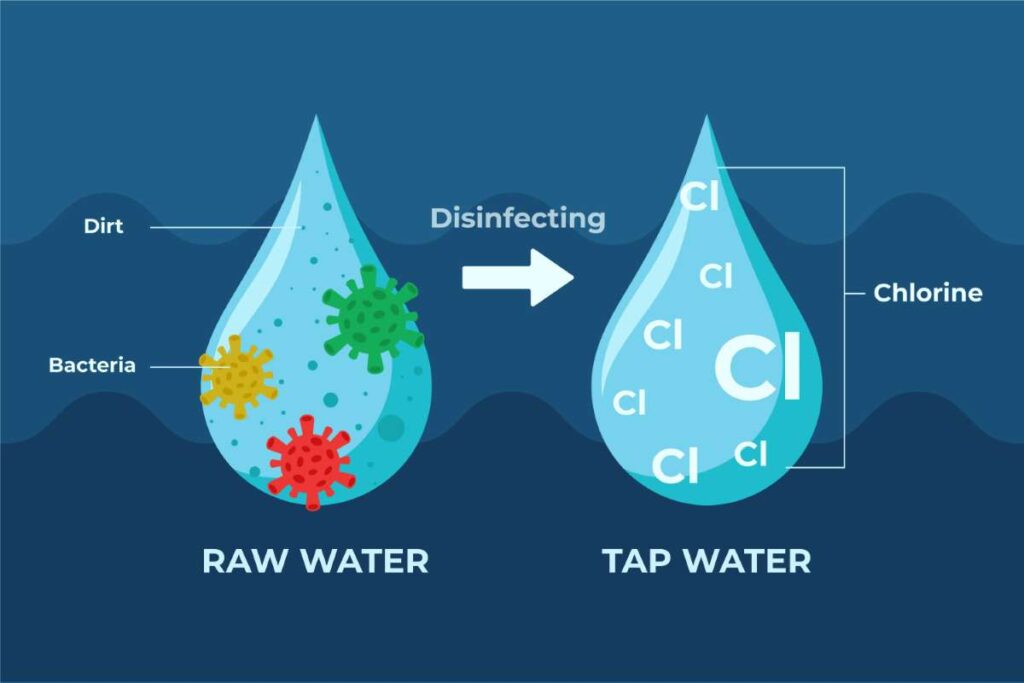Top Pool Service Growth Metrics for Santa Rosa, California
In this blog post, we will delve into the essential growth metrics for pool service businesses in Santa Rosa, California. The pool maintenance industry is thriving, and understanding the key performance indicators (KPIs) can help business owners optimize their operations, drive growth, and enhance profitability. We’ll explore metrics such as customer acquisition cost, average revenue per customer, and customer lifetime value, among others. By the end of this article, you will have insights into how to effectively measure and manage growth in your pool service business.
As the warmer months approach, Santa Rosa, known for its beautiful weather and stunning landscapes, sees an increase in pool ownership and maintenance demand. Consequently, pool service businesses have a unique opportunity to expand their operations and increase revenue. Understanding and utilizing growth metrics can provide valuable insights into operational efficiency, customer satisfaction, and overall business success. In this blog post, we will explore the top pool service growth metrics that can significantly impact your business in Santa Rosa.
Understanding the Importance of Growth Metrics
Growth metrics are critical for any business, including those in the pool service industry. They provide measurable insights that can inform decision-making and strategic planning. Metrics like customer acquisition cost (CAC), churn rate, and customer lifetime value (CLV) help business owners understand where to allocate resources and how to drive profitability.
For pool service companies in Santa Rosa, focusing on these metrics can lead to improved customer retention, optimized marketing strategies, and ultimately, increased revenue. As competition rises, utilizing these insights can set your business apart from the rest.
Customer Acquisition Cost (CAC)
One of the most essential metrics for pool service businesses is the customer acquisition cost. CAC measures the total cost incurred to acquire a new customer, encompassing marketing expenses, sales efforts, and any promotional offers. In Santa Rosa, where many residents invest in premium pool services, understanding CAC can help optimize marketing strategies.
To calculate CAC, you need to divide the total costs associated with acquiring new customers over a specific period by the number of new customers gained in that same timeframe. For example, if your pool service spent $10,000 on marketing in a month and acquired 100 new customers, your CAC would be $100. By keeping CAC low, businesses can maximize their return on investment and foster a sustainable growth model.
Average Revenue Per Customer (ARPC)
Another vital metric is Average Revenue Per Customer (ARPC), which indicates how much revenue each customer brings over a specified period. This metric requires tracking the total revenue generated during a given timeframe and dividing it by the number of active customers. Understanding ARPC can help pool service businesses in Santa Rosa identify pricing strategies and service offerings that attract higher-value clients.
For instance, if your pool service generated $50,000 in revenue last year with 200 active customers, your ARPC would be $250. By focusing on increasing ARPC through upselling additional services or premium packages, your business can significantly enhance its revenue potential without needing to acquire new customers.
Customer Lifetime Value (CLV)
CLV is a crucial metric that estimates the total revenue a customer will generate for your business throughout their entire relationship with your company. For pool services, loyal customers often lead to long-term contracts and repeat business, making CLV particularly relevant. Calculating CLV involves estimating the average purchase value, purchase frequency, and average customer lifespan.
For example, if a customer spends $250 annually for four years, their CLV would be $1,000. Focusing on increasing CLV can help pool service businesses improve customer retention strategies and foster loyalty among its clientele in Santa Rosa. A higher CLV often indicates a well-performing business model and effective customer engagement.
Churn Rate
The churn rate, or attrition rate, measures the percentage of customers who discontinue using your services over a specific period. In the pool service industry, a high churn rate can signify dissatisfaction with service quality or pricing. For businesses in Santa Rosa, monitoring churn rate is essential for maintaining a stable customer base.
To calculate churn rate, divide the number of customers lost during a period by the total number of customers at the beginning of that period. For instance, if you had 200 customers at the start of the month and lost 20 by the end, your churn rate would be 10%. By analyzing churn rate, pool service businesses can identify areas for improvement, such as customer service enhancements or more personalized service offerings.
Service Efficiency Metrics
Service efficiency metrics are critical for pool service businesses looking to optimize operations. Metrics such as average service time per pool, first-time resolution rate, and technician productivity can provide insights into operational performance. For Santa Rosa-based pool services, these metrics are vital for managing labor costs and improving service delivery.
For example, tracking average service time per pool can help businesses identify efficiency bottlenecks or areas where technician training may be needed. By optimizing service efficiency, pool service providers can reduce costs, enhance customer satisfaction, and ultimately drive growth.
Marketing Return on Investment (ROI)
Understanding the effectiveness of marketing efforts is critical for pool service businesses. Marketing ROI measures the revenue generated from marketing activities against the costs incurred. In Santa Rosa, where competition is high, analyzing marketing ROI can help businesses refine their marketing strategies and allocate budgets more effectively.
To calculate marketing ROI, subtract the total marketing costs from the total revenue generated through those efforts, then divide by the marketing costs. For instance, if a marketing campaign cost $5,000 and generated $20,000 in revenue, your marketing ROI would be 300%. High marketing ROI indicates successful campaigns that can be scaled or replicated for further growth.
Operational Costs and Profit Margins
Monitoring operational costs and profit margins is essential for maintaining a profitable pool service business. Profit margins represent the percentage of revenue that exceeds total costs, providing insights into financial health. For pool services in Santa Rosa, managing operational costs, including labor, equipment, and supplies, can directly impact profit margins.
To calculate profit margin, subtract total costs from total revenue and then divide by total revenue. For example, if your pool service generated $100,000 in revenue with $70,000 in costs, your profit margin would be 30%. By focusing on reducing costs without sacrificing service quality, pool service providers can enhance profitability and drive growth.
Customer Feedback and Satisfaction Metrics
Customer feedback is invaluable for understanding the quality of service provided. Metrics such as Net Promoter Score (NPS) and customer satisfaction (CSAT) scores offer insights into customer perceptions and can guide improvements. In Santa Rosa, where customer expectations are high, actively gathering and analyzing feedback is crucial for business success.
NPS measures customer loyalty by asking how likely customers are to recommend your services on a scale of 0 to 10. A high NPS indicates a strong customer base, while a low score may suggest areas needing attention. Implementing changes based on feedback can foster loyalty and enhance overall satisfaction, driving growth in your pool service business.
Growth Trends in Santa Rosa’s Pool Service Industry
As we analyze these metrics, it’s important to consider the broader trends shaping the pool service industry in Santa Rosa. With the increasing popularity of residential pools, particularly among families, the demand for pool maintenance services continues to rise. This trend presents significant opportunities for businesses looking to capitalize on the growth.
Furthermore, technological advancements, such as smart pool systems and automated cleaning solutions, are changing how services are delivered. Companies that adapt to these innovations can improve operational efficiency and enhance customer satisfaction. By aligning growth metrics with these industry trends, pool service businesses can position themselves for sustained success.
Conclusion
In conclusion, understanding and leveraging growth metrics is essential for pool service businesses in Santa Rosa, California. Metrics such as customer acquisition cost, average revenue per customer, and customer lifetime value provide valuable insights that can drive strategic decision-making and foster business growth.
By focusing on these key performance indicators and adapting to industry trends, pool service providers can enhance operational efficiency, improve customer satisfaction, and ultimately increase profitability. For those looking to enter or expand in the pool service industry, consider partnering with experts like Tower Business Brokers, who offer [Pool Routes for Sale](https://pool-routes-for-sale.com/) to help streamline your journey into pool route ownership. Start optimizing your growth metrics today to ensure your business thrives in the competitive landscape of Santa Rosa.



